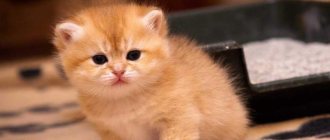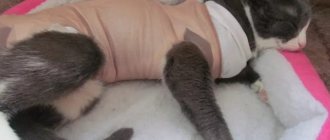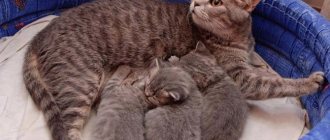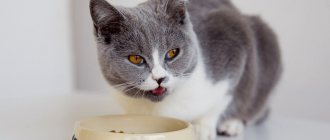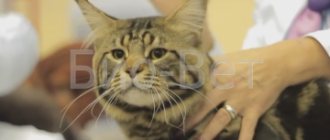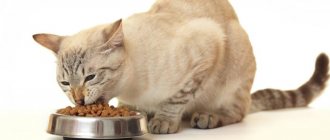What to do after swallowing a needle?
If you were careless or a sharp object ended up in your mouth as a result of a tragic accident, which also cannot be ruled out, the first thing you need to do is remain calm.
Do not under any circumstances try to induce vomiting or act as if a foreign body has entered the respiratory tract - this is a completely different problem. What happens if you swallow a needle? Will it begin to migrate throughout the body wherever it pleases? The most common horror story is that the needle will definitely reach the heart and pierce it, because it will be attracted like a magnet. To ensure that it reaches the heart after ingestion, too many factors must coincide for it to be considered a high risk. Nevertheless, such a development of events is possible.
Don't be nervous or make sudden movements
The best case scenario: lie down carefully and call an ambulance. After transport to the hospital, they will definitely take an x-ray to find out where exactly the needle is: in the esophagus or has already safely entered the stomach
The operation is prescribed under the condition that evacuation of a foreign sharp object by natural means is impossible. The patient is prescribed a special diet - a viscous porridge protects the walls of the esophagus and stomach; there is approximately an 80% chance that the needle will come out with the feces.
The cat swallowed a needle or foreign bodies in the gastrointestinal tract of cats
If you have a cat in your house, you will have to maintain order. A cat may eat foreign objects for various reasons.
Firstly - games. Cats just have fun playing with threads, rubber bands, small toys that you dropped in a hurry, or children scattered on the floor, on the sofa, etc. New Year's "rains" are often eaten. The toys themselves, intended for cats, should be assessed by you from the point of view of safety and, so to speak, eatability. Perhaps a new toy will seem harmless to you, keep in mind that when it gets old and worn out, the toy can begin to fall apart, lose parts, and must be replaced in time with a stronger one. Bags and paper also occupy a high position in terms of being eaten by representatives of the cat tribe.
Secondly, a cat is a predator and, having caught an impromptu mouse, may well “get into character” and try to eat it, the so-called “hunter-prey” syndrome.
Thirdly, on the street, a cat can eat grass, followed by vomiting, to cleanse the stomach of woolen bezoars. Bezoars are hairballs that form when an animal grooms its coat. If the owners do not periodically supply the cat with grass (clean, sprouted at home, especially for these purposes), it may try to use threads, etc., for this purpose. But threads, elastic bands and “rains” inside a cat behave completely differently than grass. The intestines can literally be strung on a thread, assembled into an accordion, causing inflammation, torsion, intussusception, necrosis, perforation, etc.
In addition, there is such a thing as “perverted appetite.” The desire to eat non-edible objects may arise, for example, with pancreatitis - inflammation of the pancreas, vitamin deficiencies, problems with the thyroid gland, if feline viral leukemia is suspected, etc.
That is, it is important to recognize in time whether it is necessary to consult a veterinarian, even before signs of intestinal obstruction or symptoms of a foreign body in the mouth appear.
Another reason could be poor nutrition or poor quality food. Dangerous are chicken and fish bones, joints and fragments of other bones... Some foreign authors identify a genetic factor. A predilection for chewing, sucking and licking cotton, wool, synthetic and other things can often manifest itself in Siamese cats.
The next reason is stress and lack of attention, and similar symptoms can occur if the kitten is taken away from its mother too early or as a violation of the sucking reflex. That is, psychological problems.
In the photo there are x-rays of a cat who did not intend to swallow the needle; she, like most people, ate the thread, and the sewing needle was a bonus. It could have cost her her life. Fortunately, the owners realized what had happened in time, took the poor thing to the veterinary clinic, and the problem was successfully resolved. In this case, the needle did not reach the stomach or intestines, however, not everyone is so lucky. Be careful, consult a veterinarian in a timely manner if you notice only signs of a perverted appetite in the animal.
If there is a foreign body in the mouth, the cat shows signs of pain, cannot eat, perhaps rubs its face with its paw or rubs against various objects, trying to remove the foreign object, and profuse salivation may appear. If the problem is located in the esophagus, the cat may choke (a foreign body may block the larynx or pinch the trachea). If there are problems in the esophagus, stomach, or intestines, vomiting, constipation, acute abdomen, etc. occur.
Without delay, show the animal to the veterinarian as soon as possible. Sometimes the problem is obvious. But more often, the cat may need a thorough examination, possibly under general anesthesia, an X-ray examination, possibly also a contrast one, ultrasound, blood tests and other studies to confirm the diagnosis.
Chief physician of the veterinary clinic "UMKA" Yana Aleksandrovna Latsapneva
How to help pets
Cats and dogs become victims of owner's negligence. If a needle is lying on the floor, the animal may accidentally pick it up, start playing with the thread and, as a result, treat itself to an unpleasant sharp object. On the street, a domestic dog can become a victim of dog hunters - sometimes they throw not poisoned meat, but minced meat stuffed with needles.
If a dog or cat swallows a needle, the unfortunate animal will not be able to tell you about it. The animal may swallow painfully if the esophagus is injured and may vomit, which significantly increases the risk of additional trauma. At the slightest suspicion, you need to take your pet to the veterinarian, an x-ray will help make a diagnosis and prescribe proper treatment - surgery or, as in the case of people, a special diet to ensure the needle comes out naturally.
Why are threads, ties and ribbons dangerous for cats?
Long ropes, threads and ribbons can be dangerous for your cat for several reasons:
- Obstructions in the mouth. They can get stuck in the mouth and cause an obstruction. The movements of the tongue and the barbs on the top of the cat's tongue can essentially wind the rope and wrap it around the base of the tongue. The thorns prevent him from coming out again. In this case, the string may become stuck in the mouth or throat, causing choking and suffering.
- Foreign body in the stomach. The thread may get stuck in the stomach in a ball. Most threads and ribbons are difficult to digest and therefore remain unchanged in the stomach. This causes irritation and damage to the stomach lining, causing your cat to feel nauseous and prone to vomiting.
- Linear foreign body. If the thread enters the intestine, it can form a “linear foreign body.” A typical foreign body (such as a stone or toy) blocks the intestine and itself causes an obstruction. Linear foreign bodies are not an obstacle in themselves, but they cause the intestines to accumulate around themselves, and this forms an intestinal obstruction, which is even more dangerous.
- Dangerous items. There may be other dangerous objects attached to the strings, threads or tape. Cats can also swallow a needle attached to a thread, which can cause internal damage by puncturing the digestive tract. Cats can also ingest spools of thread, which can act as typical foreign bodies and cause intestinal obstruction.
shutterstock
Taste preferences
Men may be upset, but in fact, the process of swallowing seminal fluid causes genuine pleasure in a small number of women. Basically it is the desire to please your partner. To prevent it from developing into a gag reflex, you should think about the taste of sperm. Frankly speaking, he is quite peculiar. It is easy to improve the aroma and taste of the liquid: shortly before the act, you need to eat pineapple, banana, strawberries and other aromatic fruits. A sweet diet the day before the planned pleasure will also improve the taste of the ejaculate. In this case, the question of the lady’s disgust will probably not arise, and the man will get what he wants.
Take care of your own body, and let intimate relationships bring you mutual pleasure.
Removing a needle from a dog's body in a clinic
The veterinarian will take an x-ray and, depending on the location of the needle, choose a treatment method. In most cases, surgery is performed. And the sooner it is carried out, the better for the dog.
The only way to remove a needle from the lungs, stomach, heart, and other internal organs is through surgery. The operation is performed under general, combined anesthesia. After surgery, the animal must be under medical supervision.
After surgical manipulations, the veterinarian prescribes symptomatic medications to normalize the general condition and restore the functioning of internal organs.
Owners must strictly follow all the veterinarian’s recommendations so that the rehabilitation process goes as quickly as possible and no complications arise.
Diagnosis and treatment
At the veterinary clinic, the doctor will prescribe and conduct an instrumental examination, including:
- X-ray – the image will immediately show how and where the needle is located. To identify the thread, an X-ray examination with a contrast agent is performed.
- Ultrasound - an ultrasound examination will allow a specialist to assess the condition of organs adjacent to the gastrointestinal tract that could be injured by a needle.
- Gastroscopy – using a gastroscope, the doctor will examine the digestive system and assess the damage caused by the needle as it passes.
Blood and urine tests are prescribed less frequently - if abdominal surgery is necessary and after removal of a sharp object.
Surgical treatment
In order to remove the needle, the following is prescribed:
- abdominal surgery, when the animal is opened and, after removal, sutured;
- endoscopic intervention - the operation is performed laparoscopically - through small punctures that do not require sutures and long-term rehabilitation.
Surgical techniques. Depending on the location of the needle, different surgical techniques are used, namely:
- enterotomy – from the intestines;
- gastrotomy - from the stomach;
- esophagotomy - from the esophagus.
After the operation, the animal remains in the clinic for some time under the supervision of a doctor.
What should the owner do?
The prepared saline solution is necessary so that the animal can vomit the swallowed object.
When the owner catches the pet eating threads, it is important not to hesitate. First of all, you will need to take the cat in such a way that it cannot resist and scratch the person
Then the pet needs to open its mouth and carefully remove the thread if it remains on the tongue. However, the owner may not have time. If the cat has already swallowed a foreign object and no serious deterioration in its condition has been noticed, it is permissible to provide first aid at home. When a pet ate a thread not long ago, the first thing the owner needs to do is try to provoke vomiting. Veterinarians recommend preparing a saline solution. To do this, you will need to add 2 teaspoons of salt to 1 liter of purified water and mix thoroughly. The resulting composition must be poured into the cat’s mouth and wait until he vomits.
If the pet ate threads a few hours ago, they should have already reached the intestines. In such a situation, you should use a syringe without a needle and Vaseline oil. A product is carefully poured into the animal’s oral cavity, which helps facilitate the passage of threads through the gastrointestinal tract. After the manipulation, veterinarians recommend not giving the cat food for 2-3 hours. In addition, the owner needs to make sure that the pet goes to the toilet. When threads begin to come out of the anus, the owner is strictly forbidden to try to pull them out
This precaution is due to the fact that the possibility of damage to internal organs cannot be excluded.
After such an emergency, the pet may become apathetic, which indicates the need for medical attention.
A pet that has swallowed thread does not always feel well. The following symptoms may be noticed:
- apathy;
- weakness;
- vomit;
- anxiety.
In such a situation, it is important for the owner to take the cat to a veterinary clinic as soon as possible. The veterinarian will examine the animal and will be able to remove the thread using an endoscope if it is located in the stomach
In a situation where a foreign object has reached the intestine, causing its obstruction, surgical intervention is preferably prescribed. Veterinarians note that most cats tolerate such operations well.
Causes of gastric obstruction in cats
Why do domestic cats swallow inedible objects? Polyphagia - a perversion of appetite that manifests itself in some pathologies, when animals purposefully eat everything - is quite rare. The reasons for swallowing various things are in most cases quite banal, and gastric obstruction in a cat is most often a consequence of:
- a game in which the cat accidentally swallows an object;
- eating inedible things that have a pleasant smell, for example, a bag containing meat or sausage packaging;
- chewing rustling objects (cats like to chew cellophane, tinsel, etc.);
- feeding bones, especially those that have undergone heat treatment;
- accumulations of wool in the stomach.
Small objects can remain in the lumen of the stomach, completely blocking its work, or pass into the intestines, causing obstruction in the lower gastrointestinal tract.
Swallowed threads, ribbons, rain from the Christmas tree - what surgeons call linear bodies, are capable of stretching along a significant portion of the gastrointestinal tract, collecting intestinal loops, injuring the walls of organs, causing perforation and necrosis.
If part of a swallowed linear body is visible from the cat's anus, under no circumstances should you pull it out! Such objects very rarely leave the body on their own; if pulled, they can simply cut the intestines.
Some small objects can gradually accumulate in the stomach if their size does not allow them to pass further into the duodenum, causing a gradual increase in symptoms and deterioration in the cat's well-being.
Sharp objects such as needles and bones in a cat's stomach can injure the stomach wall, causing cuts and punctures, affecting nearby organs and migrating into the abdominal cavity.
What to do
From the fuss of action and the desire to independently provide help, your cat may suffer first of all.
Swallowing a needle and thread is a big threat to your pet’s health, so you need to be careful. Your first action in such a situation should be to call the veterinary clinic
Try to always have such numbers in your phone book so as not to waste time.
At home, it is impossible to solve the problem of swallowing a needle, since an x-ray is needed to detect the location of a foreign body in the body. Remember, if your cat or dog swallows a needle, it is strictly prohibited
- Try to pull the needle yourself by the end of the thread, as this can significantly worsen the situation;
- Postpone a visit to the veterinarian until the last minute;
- Feel the pet.
After admission to the veterinary clinic, the animal is prescribed an X-ray examination and, at the discretion of the doctor, a number of tests. The veterinarian then determines how the foreign object will be removed. Surgery or endoscopic removal is possible. When a cat swallows a thread and a needle, serious intervention is required, followed by a rehabilitation period. The veterinarian will determine the period during which the pet will need to stay in the hospital after surgery for better recovery.
In most cases, if a cat that has swallowed a thread with a needle is not given timely help, it dies. You cannot say that the cat will cope with the problem on its own and hope that the needle will not catch the internal organs. Regardless of whether the stomach or other internal organs are damaged, the consequences can be extremely dire. Take care of your pets and do not leave such dangerous objects as thread and needle unattended. If you suspect that your cat has swallowed a foreign object, it is better to consult a doctor immediately so as not to regret wasting your time.
VETERINARIAN CONSULTATION REQUIRED. INFORMATION FOR INFORMATION ONLY.
The curiosity and active lifestyle of domestic cats often play a cruel joke on them, causing a foreign object to enter the gastrointestinal tract. The owner of a furry fidget must know not only the symptoms of the disease, but also what to do in such a situation, what danger a foreign object poses in the animal’s body. Often, in order to save the life of a pet, a veterinarian has to resort to surgery.
Experienced breeders and veterinarians know that most often the penetration of foreign bodies occurs through the digestive tract. Curious cats, playing with various objects that come into their field of vision, often swallow them. Especially often, during the operation, veterinarians discover caps from valerian, parts of children's construction sets, coins, construction waste, and burst balloons.
The peak of calls regarding animals swallowing a foreign object usually occurs during the New Year holidays.
Bright tinsel, small Christmas tree decorations, parts of garlands, Christmas tree decorations attract the attention of curious cats with their shine and rustle.
Furry couch potatoes are partial to handicraft items (threads, needles, buttons, decorative elements) and fishing gear (line, hooks, spoons, wobblers, etc.).
The risk group includes small kittens and young animals. Due to natural curiosity and lack of life experience, young animals try new objects and often swallow them. Animals left to their own devices for a long time are also at risk. A bored cat tries to entertain itself by playing with foreign objects. Veterinarians also consider hair balls in a cat's stomach to be a dangerous foreign body.
Throat bone (fish bone)
Among cases of foreign bodies of the upper respiratory tract in the practice of an otorhinolaryngologist, fish bones are the most common. The peak demand for removal of fish bones occurs in the summer months, when the diet contains a lot of freshly caught river fish. Samara is no exception, as it is located on the Volga River. Removing and pushing through fish bones is done at home with a crust of bread. Most often, small, thin bones—ribs—get stuck. The bone becomes lodged in the upper respiratory and digestive tracts at the time of ingestion. The most favorite places for bone fixation in the pharynx are the palatine tonsils, lingual tonsil, lateral ridges, posterior palatine arches, and pyriform sinuses. The palatine tonsils become a target for fish bones, since they actively accompany the bolus of food at the moment of swallowing. The lingual tonsil suffers for the same reasons. The tissue of the palatine and lingual tonsils is represented by lymphadenoid tissue, which is very loose and easily threaded onto a thin fish bone. Concomitant pathology in the form of chronic tonsillitis with hypertrophy of the tonsils increases the risk of bone entering the tissue. In the case where the bone is stuck in the upper parts of the pharynx and is in the line of sight, removing the fish bone in such a situation is not difficult. The situation with bone fixation in the lower parts of the pharynx requires the participation of a specialist. It is extremely difficult to remove such a bone without the help of an otolaryngologist. Complications of pharyngeal trauma caused by fish bones are rare. This form of sore throat is classified as traumatic; if the bone remains in the tonsil tissue for a long time, paratonsillitis can develop, which will end in a peritonsillar abscess. Acute pharyngitis, lateropharyngeal abscess, mediastinitis, phlegmon of the pharynx, neck, sepsis, laryngeal stenosis as a complication are quite rare. Removal of fish bones in Samara is performed by ENT doctors at Outpatient Center No. 1. First medical aid. During pharyngoscopy, you should carefully examine the palatine tonsils, moving away the palatine arches; with indirect laryngoscopy, you should carefully examine the root of the tongue, the vallecula of the tongue, and pear-shaped pouches. Finger examination is allowed. The foreign body is removed with a forceps or tweezers under visual control, after which it is recommended to rinse the oropharynx with an antiseptic solution and adhere to a gentle diet. If the foreign bodies are located in a different location in the pharynx, the patient should be urgently hospitalized in the otorhinolaryngology department. Specialized assistance. Foreign bodies of the lingual tonsil, vallecula of the tongue root and pyriform pouches are removed during indirect laryngoscopy in adults and direct hypopharyngoscopy in children using a laryngeal forceps or forceps. Anti-inflammatory therapy is prescribed. If a foreign body is not detected in the pharynx, and the pain syndrome persists, it is necessary to exclude a foreign body of the esophagus. For this purpose, fibrohypopharyngoscopy and esophagoscopy are performed.
What is the danger
Seeing the thread, the cat immediately remembers his childhood, the piece of paper on the thread and the fun of fussing with it. Therefore, not a single cat will pass by such an interesting item. At risk are young animals, kittens and pets left to their own devices for a long time. Young animals, due to lack of experience or for fun, can swallow a needle, thread, buttons, snaps and other small objects.
The structure of a cat's tongue. Furry pets, unfortunately, very often swallow sharp objects and, as a rule, this leads to their death. The problem is not that the cat is stupid and cannot “spit out” an inedible, dangerous object. The structure of a cat's tongue is such that a thread that gets into the mouth can only be swallowed.
The tongue has hard tubercles directed towards the esophagus. As it turned out, the tips of the tubercles have a U-shaped structure. With this “fork” the animal rips meat off the bones of its prey and takes care of its coat. A pet can only swallow a thread caught in these “flyers”, otherwise it is impossible to get rid of it. And along with the thread, the needle is sent into the esophagus.
Consequences and risks
The needle can pierce the stomach, intestines and damage other organs adjacent to them, or penetrate muscle tissue. Various options for passing a sharp object are fraught with:
- perforation of the digestive tract;
- development of erosion, ulcers, neoplasms;
- tissue necrosis;
- internal bleeding;
- peritonitis;
- mucosal injury followed by inflammation;
- dehydration as a result of vomiting and diarrhea;
- exhaustion due to refusal of food, intestinal obstruction;
- damage to internal organs.
Metal oxides can cause purulent melting of tissues and blood poisoning.
Signs of internal damage
If a cat swallows a sewing needle, it may exhibit symptoms characteristic of gastrointestinal injuries:
- loud meowing and rubbing of the face;
- apathy, lying motionless in one place;
- refusal of food and water;
- profuse drooling;
- nausea and vomiting, possibly with traces of blood;
- hiccups or belching;
- bloody streaks in the stool;
- constipation, flatulence, bloating.
If the needle is stuck in the throat, palate or esophagus, the cat strains its neck, often swallows, coughs, and wheezes. Don't worry if your cat behaves normally, doesn't show anxiety, and there are no signs of damage.
- what to do if the cat is poisoned;
- why does a cat chew wires?
- why doesn't the cat eat anything?
Symptoms of chronic sinusitis
- the course of the disease is paroxysmal: remissions are replaced by exacerbations of the disease;
- during exacerbations, symptoms of acute frontal sinusitis appear; during remission, pressure and heaviness in the frontal part of the head remain, which increases with bending and loads;
- throbbing pain appears in the temples; bothered by a constant aching headache;
- there is nasal discharge, often mixed with pus and blood; but there is no feeling of complete congestion;
- swelling and pressure in the eyes persist;
- in the morning, due to the drainage of purulent mucus along the back wall of the throat, expectoration of sputum and nausea may occur;
- fatigue is increased.
One of the main indicators of the development of the pathological process during frontal sinusitis is temperature. In the acute form, which lasts 3 weeks with proper treatment, hyperthermia can reach 38°C - 40°C. In the chronic form, the temperature may be slight or absent altogether. But the absence of temperature with frontal sinusitis does not indicate recovery, because the characteristic pain remains.
The main signs of frontal sinusitis are constant aching headaches. They are in the nature of expansion, compression, pulsation, intensifying when the head is tilted forward or when performing physical activity. Pain may occur due to vibration when traveling in transport.
With hypothermia or the consequences of acute respiratory viral infection, the pressure in the frontal sinuses increases and the pain increases. Insomnia and mental stress, overwork and drinking coffee or alcohol can increase headaches even without exacerbation of the disease. The pain becomes unbearable, neurological.
The most intense point of pain in the forehead is noted above the bridge of the nose (2 cm higher). If one of the sinuses is inflamed, the pain is more localized on one side. When you tap on the forehead, aching pain appears. If there is inflammation when pressing on the superciliary tissue, the pain will last a long time.
Actions in a hospital setting if a needle is swallowed
All further manipulations will be performed by medical professionals, you remain in the role of an observer, very much interested in a positive outcome:
- You will be taken to the nearest gastroenterology department.
- They will also issue a referral for an X-ray examination, which will be carried out using a contrast agent.
- There is nothing terrible about introducing contrast into the body and receiving a light dose of radiation; you now have another pressing problem.
- If you managed to contact on time and the needle is still in the stomach, consider yourself a lucky person.
- It will be removed using FGS ( fibrogastroscopy
). You will have to be patient during probing. - Suspicious people and those who simply take a long time to decide to call the emergency room usually have less luck; the needle is evacuated into the intestines. It is still possible to remove it, but with the help of surgery.
The intestines are not a haystack, but the search may take a long time. In such conditions, there is usually no question of cosmetic or pinpoint scars; sometimes the incision goes through the entire abdomen.
Foreign body symptoms
After ingestion, a foreign body may not manifest itself in any way: more often such objects pass through the digestive tract asymptomatically. Pathological manifestations develop when they get stuck.
Foreign body in the esophagus
If a foreign body becomes stuck, it usually occurs in the esophagus. In such cases, the person may feel like they are choking. The following symptoms may appear:
- difficulty swallowing;
- sensation of a foreign object in the throat or chest (if the object is blunt);
- pain in the throat or chest (if the object is sharp);
- retching, nausea;
- cough, noisy breathing;
- excess saliva;
- blood in saliva.
Foreign body in the stomach or intestines.
- pain and/or cramps in the abdomen;
- flatulence;
- bloating;
- loss of appetite,
- nausea, vomiting;
- fever;
- blood in feces;
- diarrhea or constipation.
Foreign body in the rectum
Sometimes a foreign body can travel almost the entire gastrointestinal tract, but become stuck in the rectum. In such cases, there may be acute pain during bowel movements, and blood may be found in the stool.
Taste preferences
Men may be upset, but in fact, the process of swallowing seminal fluid causes genuine pleasure in a small number of women. Basically it is the desire to please your partner. To prevent it from developing into a gag reflex, you should think about the taste of sperm. Frankly speaking, he is quite peculiar. It is easy to improve the aroma and taste of the liquid: shortly before the act, you need to eat pineapple, banana, strawberries and other aromatic fruits. A sweet diet the day before the planned pleasure will also improve the taste of the ejaculate. In this case, the question of the lady’s disgust will probably not arise, and the man will get what he wants.
Take care of your own body, and let intimate relationships bring you mutual pleasure.
Before discussing anything, remember: if someone swallows a needle, go to the hospital immediately for an x-ray! And it doesn’t matter whether it’s a child, an adult or a pet. There is an opportunity - hurry to the doctor, do not leave it to chance, because the consequences of delay can be terrible
And only if doctors are out of your reach, and you will have to wait too long for help, should you consider some other options. What to do if you swallow a needle and the hospital is far away
In such a situation, it is necessary to reduce physical activity to a minimum so as not to provoke a fatal “injection”. Sudden movements and bending are also contraindicated. Ordinary emergency care, used when something unwanted enters the body, is not suitable in the case of a needle. This means that the victim: cannot be induced to vomit; Do not knock on the chest; and even more so, you should not press sharply on the stomach, in the hope that the needle will pop out on its own. In addition, if a child swallows a needle, there is no need to turn him over and shake him.
What can happen if you swallow a needle? It is impossible to predict the final outcome of needle swallowing with 100% certainty. But there are several scenarios according to which events usually develop. In the most dangerous case, a swallowed needle will enter the lung or heart and make a hole there, which without surgical intervention will lead to death.
Of course, death will not come instantly (although in some cases everything happens extremely quickly - within a few hours), but the inflammation provoked by the needle will ultimately lead to either the loss of part of the lung (with a delayed operation) or death (if without doctors). The location of the needle inside the body is detected using x-rays. And if the lung or heart is damaged, then immediate surgical intervention is needed. If the needle reaches the stomach, then the probability of a successful natural outcome (literally) is 80%. That is, the needle will most likely come out in the feces. True, the remaining 20% are forced in most cases to undergo surgery to remove excess metal from the body. How to remove a swallowed needle from the body - a folk method
So, the recipe is close to the one that was used in ancient times: take 1-2 grams of cotton wool, soak it in petroleum jelly (not petroleum jelly!) and swallow, after a while eat a plate or two of oatmeal or semolina. If there is no petroleum jelly, then it is better to exclude cotton wool from the “treatment” altogether - the enveloping effect of the porridge should be enough. If the course of the “disease” is favorable, the needle comes out within 2 hours to 3 days. Therefore, either try to get to the doctor during this time, or be patient.
What to do if a dog or cat swallows a needle Pets require the same things as people. That is, you need a veterinarian and an x-ray, and then either an operation or enveloping porridge and Vaseline oil. You should not give a laxative, as its action can cause damage to the gastrointestinal tract. By the way, if it seems to you that a cat or dog has swallowed a needle, this does not mean that it is so. Often the needle gets stuck in the roof of the mouth or throat. True, this does not affect the assistance scheme in any way. Now you know what happens if you swallow a needle. Try to do everything right.
For reference: children swallow needles 3-4 times more often than adults, and in animals such a nuisance is almost the norm.
Every person remembers how, as a child, his parents frightened him with the story that if you swallow a needle, it will travel through the veins to the heart, causing death. But is this really true? What actually happens if you swallow a needle, what determines the degree of danger? Let's figure out how dangerous this incident is for the life of the human body and what to do to avoid fatal consequences.
Can a person accidentally swallow a needle?
No matter how funny and ridiculous it may sound, there are many sudden cases in which you can swallow a needle:
- A sane, normal person will not just swallow a needle. But imagine a situation where you need to sew something up, and in order to straighten the fabric or see how the seam turns out, you put the needle in your mouth and suddenly sneezed, yawned, or hiccupped. In half of these moments, the needle, under the influence of air, instantly gets into the throat. A large percentage of cases of needles entering the body are among fashion designers and seamstresses.
- Very often small children swallow needles. Studying the world around them, the little ones try everything to their teeth. Crawling and playing on the floor, it is not difficult for them to find a needle that their mother accidentally dropped earlier.
- There is an ancient tradition of fortune telling using cookies, which determine a person’s fate. Small notes with wishes, buttons, decorations and even needles and pins are baked inside them. From hour to hour there are cases when during this fortune-telling people accidentally swallow a needle.
- In ancient times, a ritual of “devotion” was performed, during which a person swallowed a needle to prove his submission, fidelity, innocence and purity. The survivor after swallowing the needle was considered a righteous person, and the deceased was considered a liar.
- Prison inmates often use a needle to try to get into the infirmary. Others put needles in the food of their fellow inmates to take revenge for insults.
- In some cases, people quite deliberately swallow needles and make money from it. For example, when performing tricks, circus performances.
Gastronomic deviations
Cats of any age love to chew inedible objects. They bite houseplants, including cacti, and try tools and cutlery. There are several reasons for this interest:
- natural curiosity;
“attractive” smell of objects;
desire to sharpen teeth, mark territory;
habit.
In the latter case, the thread can serve as the engine of the toy. Seeing the owner darning a hole or scribbling, the pet may rush at a moving object. The metal has a specific smell; pins are additionally attracted by the “aroma” of the plastic heads. These are the ones your pet can chew on.
Potential Consequences
A cat and rain forming a “vicious circle” is a classic New Year’s picture. Although the situation seems funny, it poses a danger to the life and health of the pet. An animal can even be harmed by a thread.
Foreign object:
- causes irritation;
punctures tissue, opening the way for liquids and bacteria;
creates a surface for the growth of harmful microorganisms;
cuts internal organs when trying to pull it out carelessly.
Harmless objects pose danger. In a situation where a cat has swallowed a thread, what should you do? Many people will want to quickly rid the animal of the foreign object. Haste is dangerous. Many seamstresses cut their fingers with threads by quickly pulling them or pressing them hard.
The internal organs of the animal will similarly suffer if it has compressed the larynx or if there is an additional load at the opposite end of the “string”.
Preventive measures
The best solution is to prevent a potentially dangerous situation. Needles and other sharp, curious objects should be kept out of the cat's reach. A limited number of objects needed for the current task are used. They are always in sight.
To prevent the cat from chewing indoor plants, special, safe grass is planted. Wheat sprouts and oats will do. millet The latter attracts animals in its dry form. Many cats chew brooms. Dry stems can injure the stomach and larynx.
It is worth trying to curb your addiction to metal with iron supplements. But it is better to limit the cat's access to objects that it can swallow. In addition to needles, animals are attracted to screws and small parts. They like the smell of the metal or oil itself.
First aid
A visit to the nearest veterinarian is the answer to the question, the cat swallowed a needle, what to do. It is dangerous to independently remove an object with sharp ends, even if it is visible in the throat. The exception is when the object remains completely visible in the mouth. Then it can be removed with your fingers or improvised means (nail tweezers). It is better to scratch your pet's mouth and tongue than to remove a foreign object from its internal organs.
Injury can be prevented by preventing the dangerous object from entering the body. Seeing that the cat has swallowed the end of the thread with the needle remaining outside, you need to step on the visible end or grab it. Then slowly pull it out. You may need help - a second person will hold the cat. If a sharp object has passed the mouth, you need to contact a veterinarian.
A thread, rain, or strip of fabric can sometimes pass through the body without consequences, appearing in the anus. Don't pull on the end. A string or thin strip of foil can cut the edges of the intestines. If the animal does not experience any discomfort, first aid at home will be limited to cutting off the released part of the material.
Giving viscous food is a controversial decision. Enveloping products reduce the risk of tissue damage to internal organs. But a cat may not want to eat due to stress, even refusing its favorite treats.
Medical intervention
If ingestion of a sharp object is suspected, special diagnostic procedures and surgical intervention will be required. The position of the needle (another object) is determined using x-rays and ultrasound.
Surgery will be required to remove it. Endoscopy will cause minimal damage. But more often they resort to abdominal surgery. In both cases, general anesthesia is required.
Surgery is a common answer to the question: a cat has swallowed a foreign body, what should I do? Some items come out on their own. But objects that have sharp edges (edges) should be deleted forcibly. First you need to make sure they are swallowed.
Cats are interested in non-edible things, including pins. But when testing them with their teeth, animals rarely swallow such objects. Especially if the owner manages to wrap them in time.
Common pathologies
Cows often suffer from pathologies of the digestive system. They pose a serious danger to the life of the ruminant animal. Common digestive problems in cows:
- bloating;
- stop;
- blockage;
- injury.
Bloating
Tympany or bloating is a very dangerous condition that occurs due to a sudden change in the cow’s diet, the animal consuming large quantities of food that promotes increased gas formation. Tympany may occur due to a blockage in the esophagus. Symptoms:
Tympany
- Refusal to eat.
- Enlarged abdomen.
- No chewing gum.
- Anxiety.
- In severe cases - shortness of breath, pallor of the mucous membranes.
Methods to help with bloating include:
- Removal of a foreign body from the esophagus using a flexible probe.
- Stimulation of the stomach to start it.
- The use of medications that prevent gas formation and fermentation - Timpanol, burnt magnesia, activated carbon, ichthyol.
- In emergency cases, they resort to perforation of the scar with a trocar.
You can open up your stomach with a massage. It is performed on the left side of the abdominal cavity, in the area of the hungry fossa, with a fist. Pouring the area with cold water often helps. A cow needs to run to get her stomach working.
Stop
The digestion process often stops in cows due to improper feeding, for example, if concentrates predominate in the diet or the animal has eaten rotten hay. Also, gastric arrest occurs when the esophagus is blocked. Symptoms of the pathology: loss of chewing gum and appetite, general depression. If the cow's stomach has stopped, this can be checked. You need to lean your fist into the area of the hungry pit and listen to whether contractions occur.
Treatment of this pathology begins immediately. The first thing to do is to keep the animal on a starvation diet for 24 hours. In the future, digestible feed is gradually introduced - silage, a small amount of root vegetables, high-quality hay.
Silage
To start the stomach use:
- Hellebore tincture.
- Gastric lavage.
- You are given a saline solution, vodka or moonshine to drink inside (can be diluted with vegetable oil).
- Scar massage.
Zaval
Sometimes the stomach stops due to a blockage of the book. This happens when the animal’s diet is dominated by dry food, bran or grain waste. The cause of the pathology may be sand or dirt in the feed. The symptoms of a blocked book are similar to those observed when the stomach stops. It is quite difficult to identify the true reason for the cessation of digestion. For diagnosis, a puncture of the stomach with a needle is used. If it enters with difficulty, it means that we are talking about a blockage.
If the diagnosis is confirmed, it makes sense to rinse the stomach. To do this, use a solution of sodium sulfate or chloride at a concentration of 10%. The procedure will require about a liter of this solution. To start the digestion process, use the same means as discussed above - vegetable oil, hellebore tincture, vodka.
Injury
Since the cow swallows unprocessed food, dangerous objects - wire, nails, wood chips, sharp stones - often get inside along with the food. Such foreign bodies can cause serious injury to the animal - piercing the stomach or piercing its walls. Mesh injuries are often through, sharp objects can hit nearby organs - the heart, spleen, lung.
Symptoms of traumatic reticulitis:
- Anxiety, loss of appetite.
- Stretching the neck forward.
- The cow takes unnatural poses - hunches over.
- Sometimes the temperature rises by 0.5-1 degrees.
- The animal feels pain when pressing on the sternum area.
Treatment is aimed at removing the foreign object from the stomach. Metallic foreign bodies are removed with a magnetic probe. If it is not possible to remove the object, they resort to surgery or the animal is slaughtered.
All parts of the stomach of ruminants perform their functions. If at least one of them stops working, the entire digestive system suffers
It is important to diagnose the development of pathology in time and begin treatment
Helping an injured pet
If such a dangerous “trouble” does happen to a mustachioed tabby, then the owner should not waste time in the hope that everything will work out and the needle will leave the body with the feces. The fact is that food that enters the animal’s gastrointestinal tract passes through the tract in 12-24 hours. And the intestines are “folded” into loops, and sooner or later the needle will get stuck somewhere.
Therefore, the owner will have to take a number of urgent measures.
What to do to save your pet
As soon as the owner discovers that sewing supplies are missing or suspects that the cat has swallowed threads or needles, it is necessary:
- contact a veterinarian and call him to your home;
- help organize transportation of the pet to the veterinary clinic.
If the doctor cannot come to the call, then you need to carefully place the cat in a carrier, calm it down and calm down yourself and urgently go to the veterinary clinic
What not to do
While waiting for a doctor, you should never:
- palpate, knead, tap the pet’s belly and sides;
- sharply lift, turn over, shake the cat;
- try to induce vomiting or stimulate bowel movements;
- give food and water until the doctor's visit;
- try to remove the needle yourself using tweezers or the tip of a thread.
To take risks or not. You can often hear how, with the help of petroleum jelly and plenty of soft food, the owners managed to reduce the risk of intestinal damage and wait until the needle comes out naturally. Distrustful owners of furry pets should analyze the relevant chats, reviews and make sure that there are much fewer stories with a “happy ending” than tragic ones. You need to entrust the life and health of your pet to professionals, and not play Russian roulette.
Also watch the video on what to do if a kitten ate a needle, thread, or bag:
Methods for diagnosing pharyngitis
With complaints corresponding to the symptoms of pharyngitis, you can contact a general practitioner (family doctor or therapist) or a specialized specialist - an otolaryngologist (ENT).
Children's appointments are conducted by qualified pediatricians and pediatric ENT doctors.
The following methods are used to diagnose pharyngitis:
Pharyngoscopy
Pharyngoscopy is a visual examination of the mucous membrane of the throat. For pharyngitis, oropharyngoscopy is performed - examination of the oral part of the throat. Using pharyngoscopy, the doctor detects the fact of inflammation - redness of the throat and palatine arches; individual inflamed lymphoid granules are visible
It is important for the doctor to make sure that, despite the inflammatory process in the throat, the palatine tonsils do not have signs of inflammation characteristic of sore throat, that is, it is pharyngitis that is occurring
Throat swab
A smear is needed to determine which infection caused the inflammation - viral or bacterial. This cannot be done based on a patient interview and pharyngoscopy.
To accurately diagnose the disease, make an appointment with specialists from the Family Doctor network.


